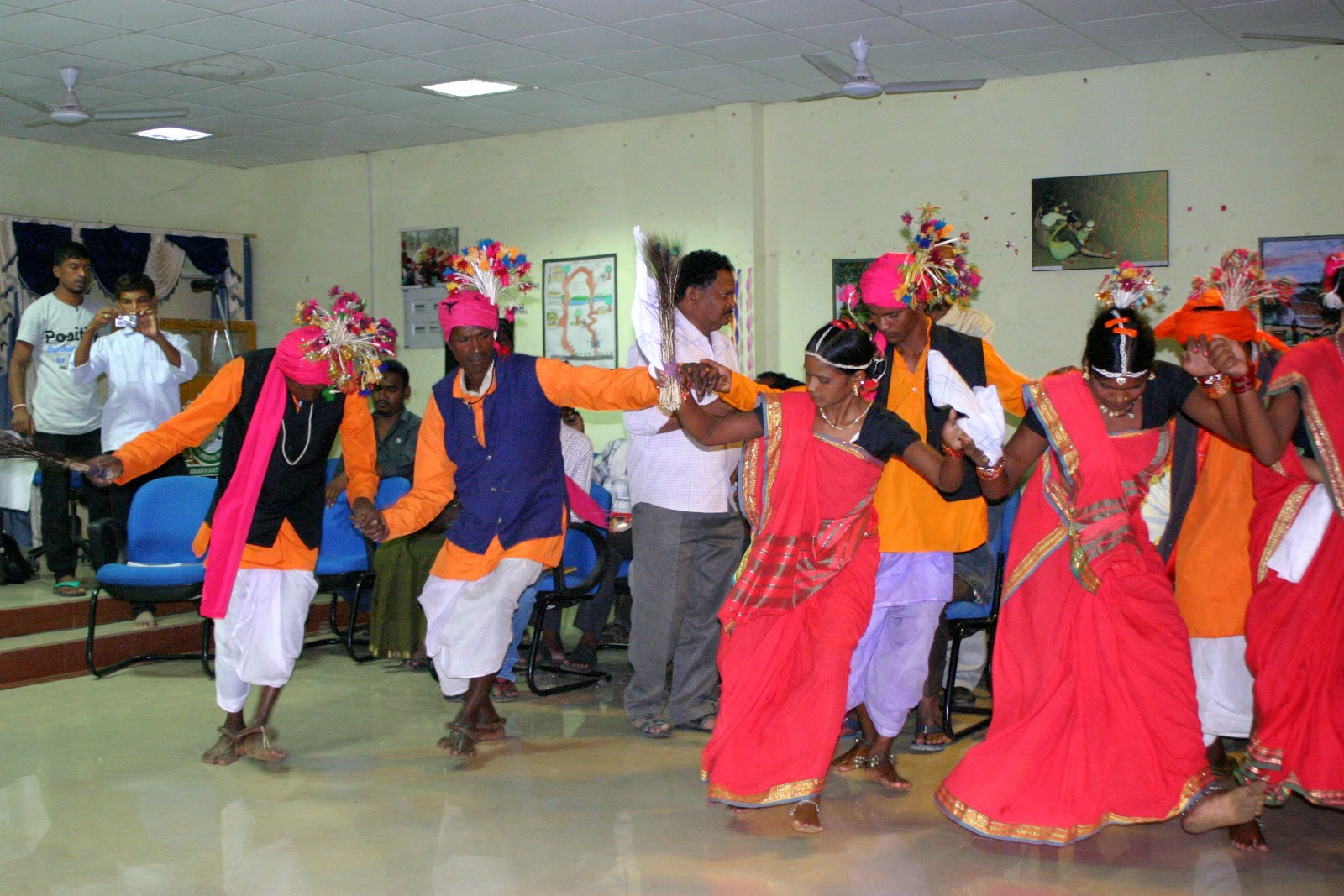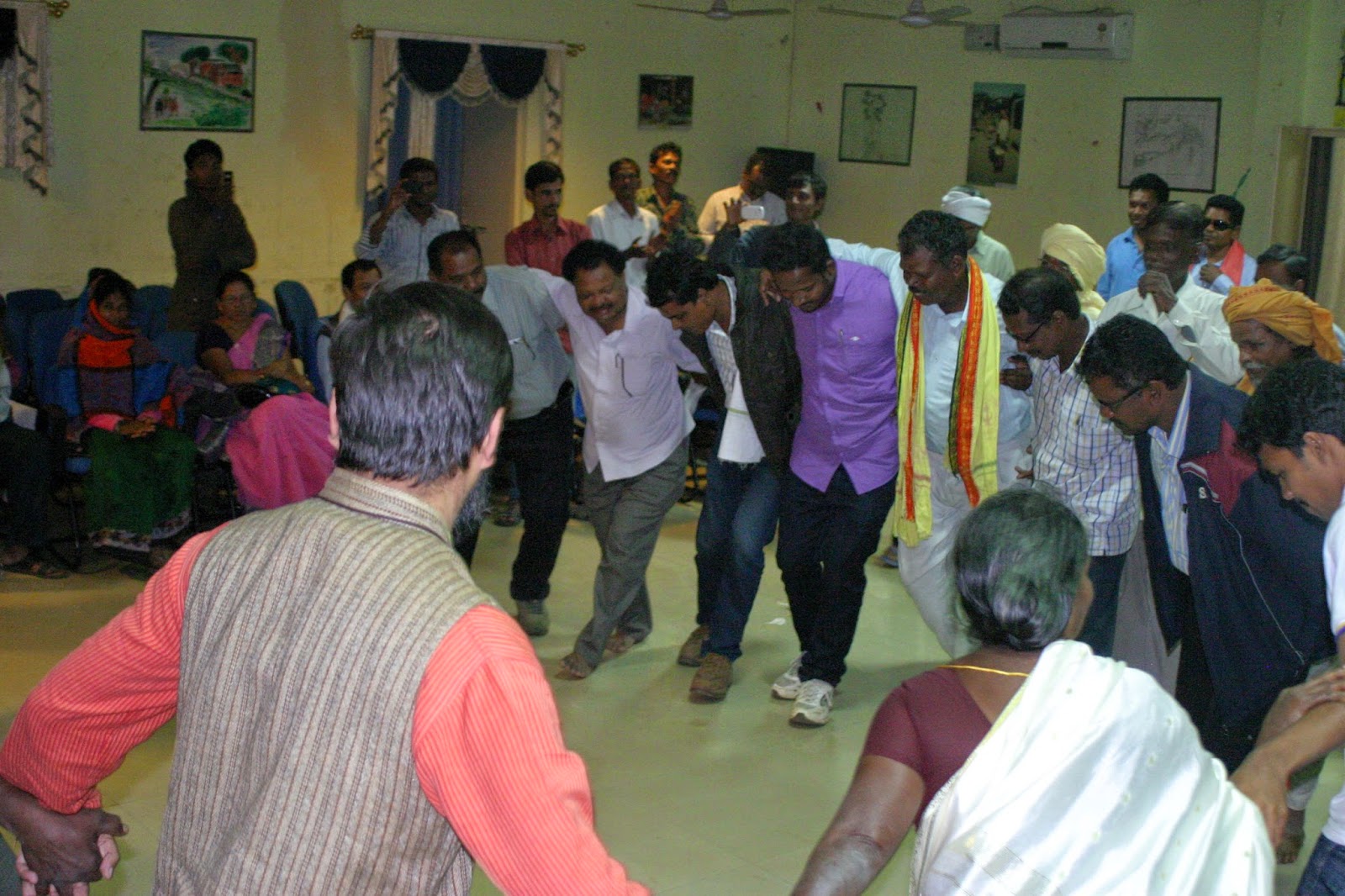 |
| A long road ahead |
Today we saw the final product begin to emerge. All
of the past few day’s hard work is organised in a master spreadsheet and
finalised by the team (gaps are filled, all of the groups’ words are collated).
 |
| The conference work is projected onto a wall to be finalized |
In the screenshot above you can see some of this. For
example, in the column on the far left is the Gondi word गाडी (gari) which means ‘to come together’. It is a verb and its Hindi equivalent
is, in the fifth column, आमान सामन आना.
The columns after that are the different regional variations: visible are the
contributions from participants from Andhra Pradesh and Telengana but beyond
that there are also entries from Maharashtra, Madhya Pradesh, Chhattisgarh and
Odisha.
Patterns of similarity
are easy to spot and tend to map onto geographical location: AP and Telengana
have many words that are same, similarly Madhya Pradesh and Chhattisgarh.
Odisha, far away on the East Coast, seems to have the most differences.
It has been, by all
accounts, a successful few days. Tomorrow everyone will go home, the details of
publication will be worked out and a report will be written and distributed to
everyone who is interested or in a position to further the cause of the Gondi
language.










